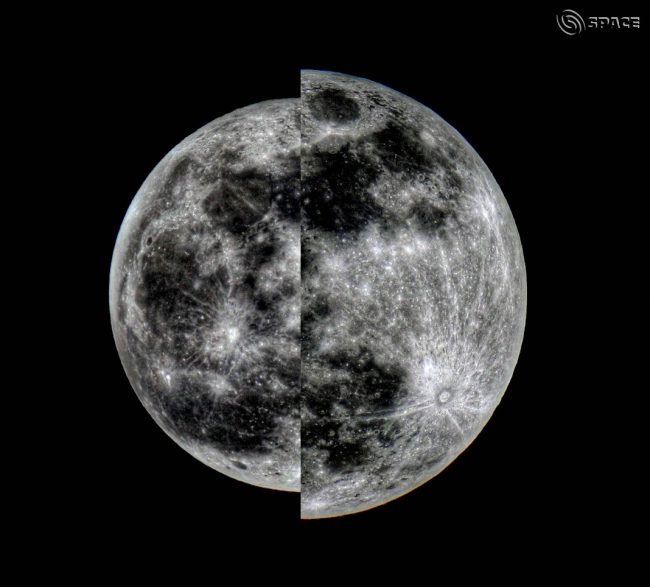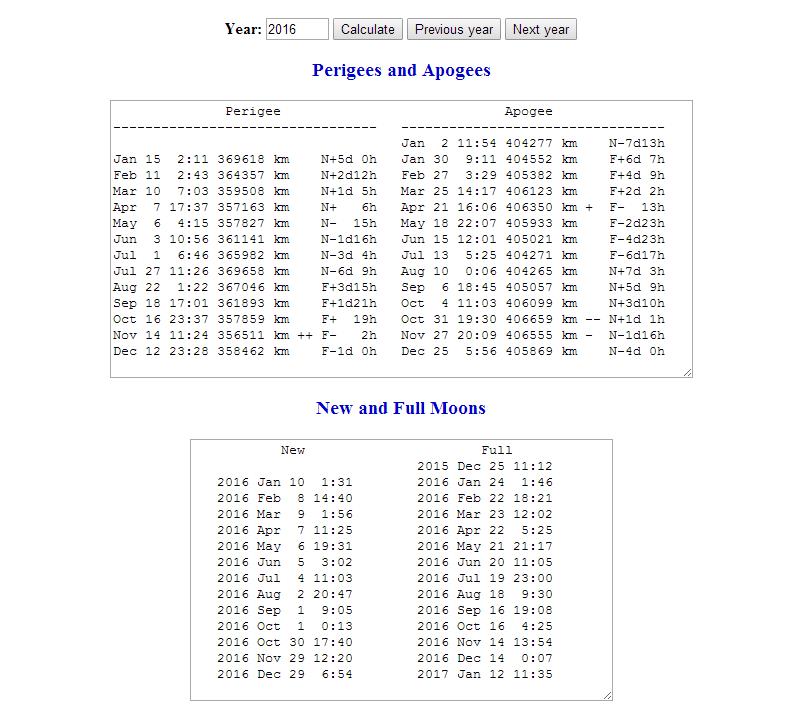
The supermoon (perigee full moon) on November 14, 2016, will bring the moon closer to Earth than it has been since January 26, 1948. What’s more, the moon won’t come this close to Earth again until November 25, 2034. That makes the November 2016 full moon the closest and largest supermoon in a period of 86 years!
Should you look for it on November 14? Yes! But be sure to look the night before as well – November 13. For many on Earth, the moon will be more “super” that night … although both nights will be awesome!
Image top of post: Full moon at apogee (left) and perigee (right) in 2011. By EarthSky community member C.B. Devgun in India. Thanks, C.B.!

On November 14, 2016, at 11:23 Universal Time (UTC), the distance between the centers of the moon and Earth will shrink to its smallest distance for the year: 221,524 miles (356,509 km). That’s November 14 at 7:23 a.m. AST, 6:23 a.m. EST, 5:23 a.m. CST, 4:23 a.m. MST and 3:23 a.m. PST.
Some two weeks ago, the moon swung out to its farthest point for the year on October 31, 2016: 252,688 miles (406,662 km). That’s a difference of over 30,000 miles (50,000 km) in the moon’s distance in just two-weeks’ time.

As is often the case, the closest lunar perigee of the year is the one that aligns most closely with the full moon. On November 14, 2016, the moon turns full at 13:52 UTC, only two and one-half hours after the moon sweeps to perigee at 11:23 UTC.

Eighteen years later – on November 25, 2034 – the full moon and perigee will occur within one-half hour of one another, to bring the moon less than 356,500 km of Earth for the first time in the 21st century (2001 to 2100): 356,445 km or 221,485 miles. The last time the centers of the moon and Earth were less than 356,500 km apart was on January 26, 1948: 356,461 km or 221,495 miles.
For the fun of it, we list the dates on which the centers of the moon and Earth span less than 356,500 km in the 20th century (1901 to 2000) and 21st century (2001 to 2100). The closest supermoon (perigee full moon) of the century is highlighted in CAPITALS:
20th Century (1901 to 2000):
JANUARY 4, 1912: 356,375 KM
January 15, 1930: 356,397 km
January 26, 1948: 356,461 km
21st Century (2001 to 2100):
November 25, 2034: 356,445 km
DECEMBER 6, 2052: 356,421 KM
December 17, 2070: 356,442 km
December 28, 2088: 356,499 km
January 17, 2098; 356,435 km
Extra-close supermoons result from the convergence of three astronomical happenings: full moon, lunar perigee – and the Earth at perihelion (Earth’s closest point to the sun for the year). The full moon of January 1912 swung especially close to Earth because the full moon and lunar perigee occurred at the same hour on January 4, 1912, on the very same day that Earth was at perihelion.
Bottom line: Enjoy the full supermoon on the nights of November 13 and 14, 2016, closer to Earth than it has been since January 26, 1948. The moon won’t come this close to Earth again until November 25, 2034.
Read more: Supermoons and the Saros cycle
Resources:











